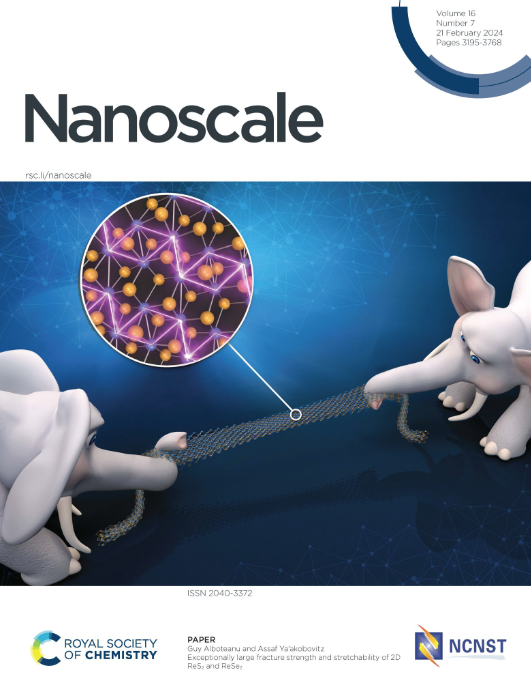局部电荷积累对金属- mos2触点光电流动力学的影响
IF 5.8
3区 材料科学
Q1 CHEMISTRY, MULTIDISCIPLINARY
引用次数: 0
摘要
单层二硫化钼(1L-MoS2)由于其优异的电学和光电子性能而受到广泛关注。然而,挑战仍然是金属-半导体结的不稳定性,这极大地影响了漏极/源极触点的性能。尽管1L-MoS2作为超薄二维半导体具有广阔的潜力,但其光电性能经常受到金属-半导体结处接触问题的影响。特别是局域电荷积累(LCA)会引起势垒高度波动,从而影响载流子输运和激活阱态。在这项研究中,我们使用光电流映射来研究光电流减少及其光电特性随器件位置的变化。结果表明,与通道相比,LCA区域的光响应性和光探测性显著降低。此外,LCA区域的衰减时间大约是通道的两倍,表明存在导致缓慢切换的深阱。本研究强调了光生LCA区域对金属-半导体结的影响在降低光电子性能中的重要作用。它还为基于二维半导体的下一代光电子工程提供了必要的关键理解。本文章由计算机程序翻译,如有差异,请以英文原文为准。
Impacts of Localized Charge Accumulation on Photocurrent Dynamics in Metal-MoS2 Contacts
Monolayer molybdenum disulfide (1L-MoS2) has attracted a lot of attention due to its excellent electrical and optoelectronic properties. However, the challenge remains the instability of the metal-semiconductor junction, which greatly affects the performance of the drain/source contacts. Despite the promising potential offered by 1L-MoS2 as an ultrathin two-dimensional semiconductor, its optoelectronic performance is often compromised by contact issues at the metal-semiconductor junctions. Especially, the localized charge accumulation (LCA) can cause barrier height fluctuation, which affects carrier transport and activated trap states. In this study, we use photocurrent mapping to investigate photocurrent reduction and its optoelectronic properties depending on device position. The results show a significant reduction in the photoresponsivity and photodetectivity of the LCA region compared to the channel. Moreover, the decay time of the LCA region was approximately twice as long compared to the channel, indicating the presence of deep traps leading to slow switching. This investigation highlights the significant role of photo-generated LCA region affecting metal-semiconductor junctions in degrading optoelectronics performance. It also provides a critical understanding necessary for engineering next-generation optoelectronics based on 2D semiconductors.
求助全文
通过发布文献求助,成功后即可免费获取论文全文。
去求助
来源期刊

Nanoscale
CHEMISTRY, MULTIDISCIPLINARY-NANOSCIENCE & NANOTECHNOLOGY
CiteScore
12.10
自引率
3.00%
发文量
1628
审稿时长
1.6 months
期刊介绍:
Nanoscale is a high-impact international journal, publishing high-quality research across nanoscience and nanotechnology. Nanoscale publishes a full mix of research articles on experimental and theoretical work, including reviews, communications, and full papers.Highly interdisciplinary, this journal appeals to scientists, researchers and professionals interested in nanoscience and nanotechnology, quantum materials and quantum technology, including the areas of physics, chemistry, biology, medicine, materials, energy/environment, information technology, detection science, healthcare and drug discovery, and electronics.
 求助内容:
求助内容: 应助结果提醒方式:
应助结果提醒方式:


